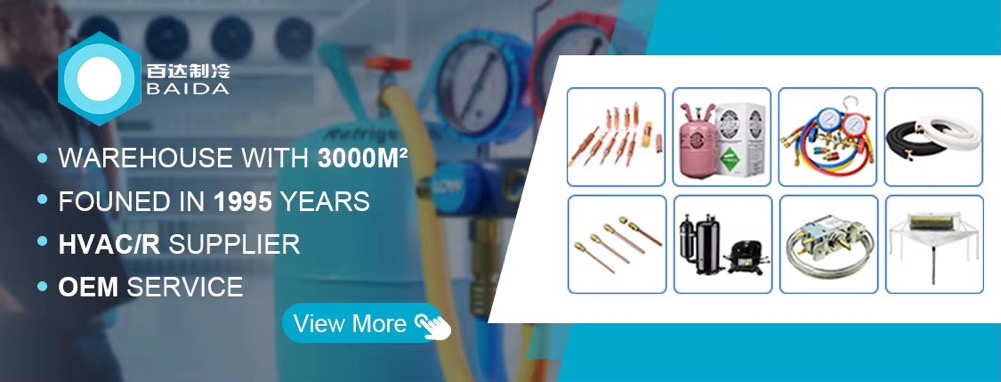1. Product Definition
Single-gauge valve is a commonly used tool in the maintenance and installation of refrigeration systems. It is mainly used to measure the pressure on one side of the refrigeration system (high-pressure side or low-pressure side). It can also assist in refrigerant filling, system pressure maintenance and leak detection.2. Structure and component functions
Header: There is a pressure scale on the dial. The units are commonly psi, bar, kg/cm², etc. Some are also marked with the temperature scale of the corresponding refrigerant. It can intuitively display the system pressure value and assist in judging the system temperature status.
Valve: By rotating the valve handle, the degree of opening and closing of the valve can be controlled to achieve the connection or disconnection between the system and external equipment (such as refrigerant cylinders, vacuum pumps), so as to perform pressure measurement, vacuuming, refrigerant filling and other operations.
Interface: Generally, it is an external thread interface, which is used to connect the refrigeration system pipeline, refrigerant filling pipe, vacuum pump connecting pipe, etc., to achieve pipeline connection between equipment.
3. Scope of application
Applicable to the maintenance and repair of various refrigeration equipment such as household air conditioners, commercial air conditioners, refrigerators, freezers, etc. It can monitor the system pressure and determine whether there is any fault in the refrigeration system, such as refrigerant leakage, blockage, etc.
4. Product features
Targeted measurement: Compared with the dual-meter valve that measures high and low pressure at the same time, the single-meter valve focuses on one-side pressure measurement, which is easier when only the pressure status of one side of the system needs to be understood.
Easy to operate: The structure is relatively simple and the operation is easy to get started, which is convenient for technicians to quickly master and use.
Adaptable to a variety of refrigerants: It can adapt to a variety of common refrigerants, such as R22, R12, R134a, R404A, R410A, etc.

















